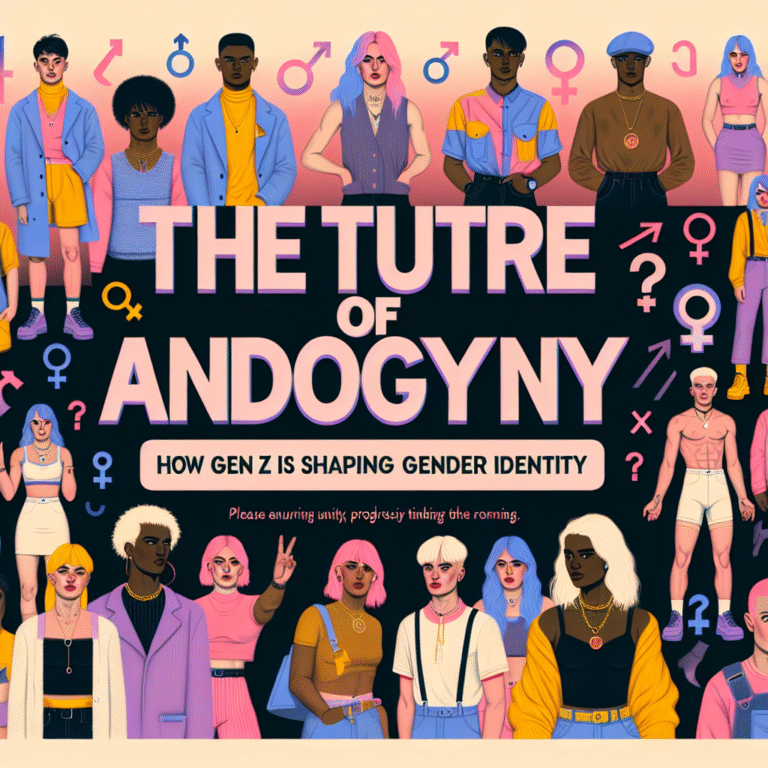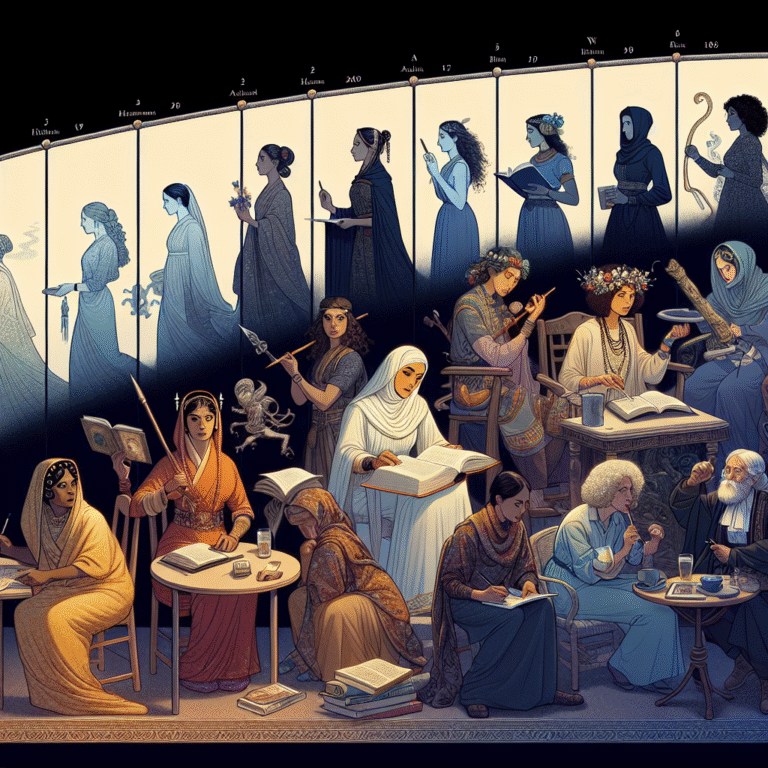
Introduction
Imagine a world where our childhood experiences dictate the paths we will tread in our adult lives. In such a world, the colors we choose in our crayon boxes can map out our futures, modified by the invisible hands of societal expectations. From Crayons to Careers: How Early Gender Socialization Shapes Our Future dives deeply into this captivating premise, revealing the profound impact that gender socialization has on our choices in life—from the toys we play with to the careers we pursue. As early as preschool, boys and girls are often nudged into predefined roles, shaping their aspirations and identities in ways that might not become apparent until much later.
Understanding the early indicators of gender socialization is critical not just for nurturing future generations but also for creating a more inclusive society. This article will explore how early gender norms and expectations can limit potential and opportunities, influencing everything from career selection to personal fulfillment. Each section will provide insights that reveal the potential for change—implementing strategies that disrupt gender norms and empower children to chase their dreams, regardless of their gender.
The Foundation of Gender Socialization
Understanding Gender Socialization
Gender socialization refers to the process by which individuals learn and internalize the norms, behaviors, and roles associated with their assigned gender. Starting from infancy, societal expectations shape how children are treated, what is encouraged or discouraged, and how they play. The first crayons handed to a child may be determined by their gender—a girl might receive pastel colors for drawing princesses, while a boy might get bold hues for action figures. This seemingly innocuous act underscores the broader narrative of gender socialization.
The Role of Family and Environment
Family is often the first educator in the lesson of gender roles. Research shows that parents may unconsciously guide children towards traditional gender roles through the toys they provide and the language they use. For instance, boys may be praised for their strength and competitiveness, while girls might be recognized for their nurturing abilities. This familial influence serves as a foundation for a broader societal structure that perpetuates these gendered expectations.
Case Study: Toys and Gender Norms
A study from the University of California demonstrated that children who played with gender-neutral toys showed more diverse interests and hobbies. In contrast, children exposed exclusively to gender-specific toys were more likely to pursue stereotypical career paths. This study highlights the significant role that toy selection plays in shaping a child’s self-image and aspirations.
Educational Influences: Beyond the Classroom
The Impact of Early Education
Educational settings can either reinforce or challenge existing gender norms. Early childhood educators often unconsciously play a role in gender socialization by engaging with children differently based on their perceived gender. Research indicates that boys are often encouraged to express more aggressive behaviors, while girls are trained towards compliance.
Curriculum and Gender Bias
The curriculum itself can impose gender biases. For example, subjects like math and science are frequently marketed to boys, while literature and arts are seen as more suitable for girls. A study highlighted in The Journal of Educational Psychology found that girls who were encouraged to take STEM courses had an increased likelihood of pursuing careers in technology and engineering.
Table: Gender Representation in Different Fields
| Field | Percentage of Women | Percentage of Men |
|---|---|---|
| Nursing | 89% | 11% |
| Engineering | 14% | 86% |
| Teaching | 77% | 23% |
| Computer Science | 26% | 74% |
The above table illustrates a stark discrepancy in gender representation across various fields, echoing the foundational influences established during childhood. These disparities underscore the critical need for programs aimed at boosting interest in non-traditional fields for all genders.
Cultural Perspectives on Gender Roles
Media Influence on Gender Socialization
In today’s digital age, media serves as a powerful medium for reinforcing or challenging traditional gender roles. From cartoons and toys to video games and social media, children are bombarded with messages about what it means to be male or female. Female characters may often be portrayed in nurturing roles, while males typically take on adventurous or heroic personas.
A research study from the American Psychological Association found that children aged 3 to 7 who engaged with female character-centric media showed a more varied perspective on gender roles. This indicates the potential for media to positively influence perceptions of gender and encourage different aspirations.
Diverse Representations in Media
Organizations and initiatives are starting to recognize the importance of including diverse characters and stories in children’s media. For instance, the popular animated series "Doc McStuffins" features a young girl who aspires to be a doctor—a role traditionally dominated by men. Such representations challenge the status quo and encourage children of all genders to envision themselves in various career paths.
Case Study: Shattering Stereotypes through Media
The impact of "Frozen" on young audiences serves as a robust example of media affecting gender representation. With strong female protagonists who prioritize sisterhood over romantic relationships, the film inspired a generation to understand that aspirations can extend beyond conventional norms. This cultural shift provides a hopeful glimpse into a future where career paths are defined by interests rather than gender.
The Long-Term Effects of Gender Bias
Career Aspirations Influenced by Early Socialization
As children transition into adolescence, the foundations established during their early years significantly affect their future aspirations. A study published in The Journal of Career Development revealed that adolescents often become aware of gender disparities in careers based on their childhood experiences.
For example, boys who were encouraged in STEM fields often pursued engineering or computer science in college, while girls—despite equal aptitudes—tended to gravitate towards teaching or healthcare roles. This reveals how deeply ingrained socialization can dictate career orientations, affirming the concept of "From Crayons to Careers: How Early Gender Socialization Shapes Our Future."
Breaking the Cycle
To combat the limitations imposed by gender socialization, society must actively encourage diverse interests from a young age. Schools and parents can introduce mentorship programs that expose children to various fields, emphasizing that gender does not determine ability.
Table: Strategies for Encouraging Diverse Career Aspirations
| Strategy | Description |
|---|---|
| Gender-Neutral Toys | Promote toys that appeal to all genders. |
| Diverse Role Models | Showcase professionals from various fields. |
| Inclusive Curriculum Design | Incorporate content that challenges gender norms. |
| Mentorship Opportunities | Create programs connecting children with mentors. |
| Media Literacy Education | Teach children to critically analyze media messages. |
This table outlines actionable strategies to help break the cycles of gender bias and encourage a broader range of aspirations for all children.
Conclusion: A Vision for the Future
The journey from crayons to careers is one deeply impacted by early gender socialization, yet it is a journey that holds immense potential for change. By recognizing the limitations imposed by societal norms and comprehending the experiences that shape children’s aspirations, we can create a future where every child feels free to explore their interests, unencumbered by gendered expectations.
To foster an inclusive society, we must champion and implement strategies that encourage equal representation and diverse aspirations. By teaching children that their potential lies beyond traditional gender roles, we unravel restrictions and cultivate a new generation ready to embrace opportunities across all fields. This transformation is essential—not just for individual potential but for the health and diversity of our workforce and society as a whole.
FAQs
1. What is gender socialization, and how does it start?
Gender socialization is the process through which individuals learn societal norms and expectations related to gender, often beginning from infancy with family roles and toys.
2. How can I recognize gender norms in my child’s play?
Observe the types of toys your child gravitates towards and the roles they assume in play. Notice whether they imitate societal expectations or challenge them.
3. What can parents do to combat harmful gender norms?
Parents can introduce gender-neutral toys, encourage diverse interests, and critically engage with media that presents stereotypical gender roles.
4. How do educational environments impact gender socialization?
Educational environments can reinforce or challenge gender norms through interactions, curriculum design, and teacher biases—shaping children’s aspirations significantly.
5. What role does media play in shaping gender expectations?
Media presents characters and narratives that can shape children’s perceptions of gender roles. Engaging with diverse and empowering content can help counteract traditional views.
Thus, "From Crayons to Careers: How Early Gender Socialization Shapes Our Future" isn’t just an enlightening concept; it’s a call to action to redefine how we engage with the next generation—ensuring that every child has the chance to explore, dream, and achieve, irrespective of gender.
















